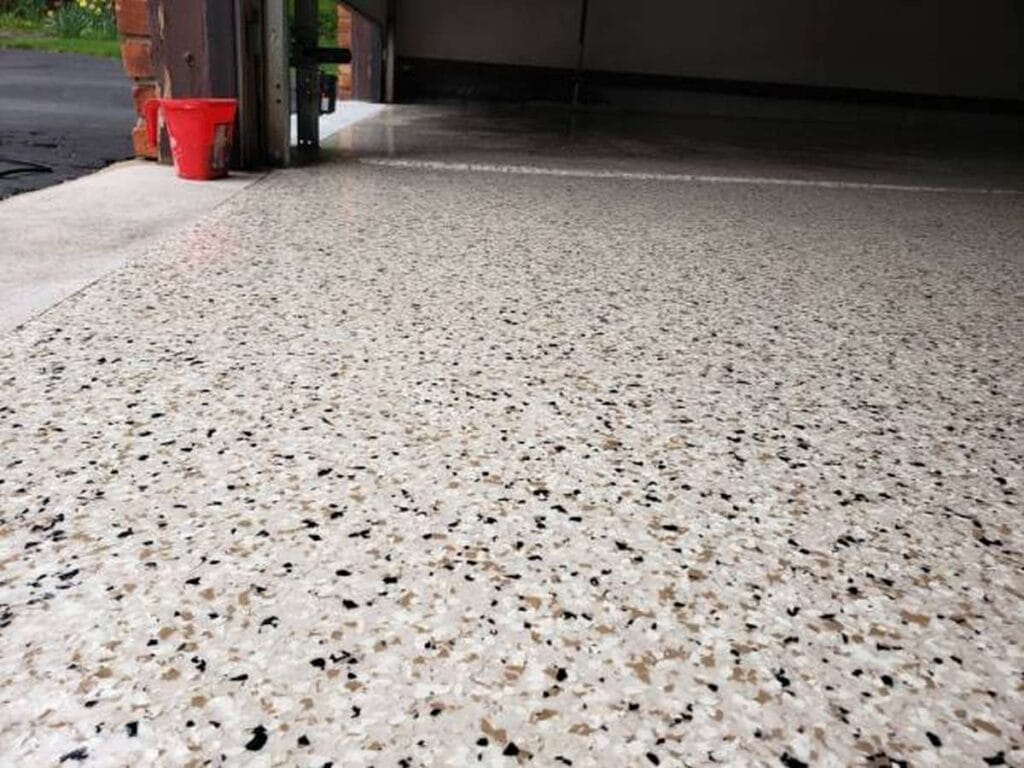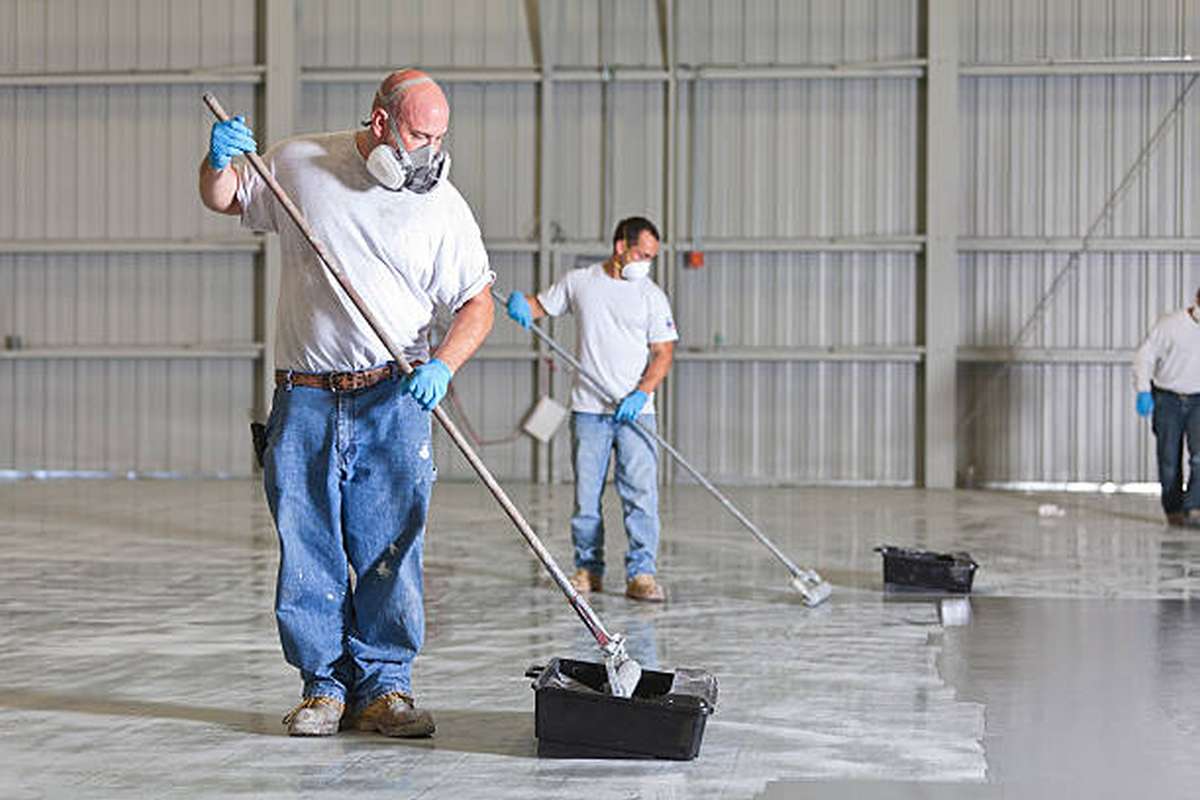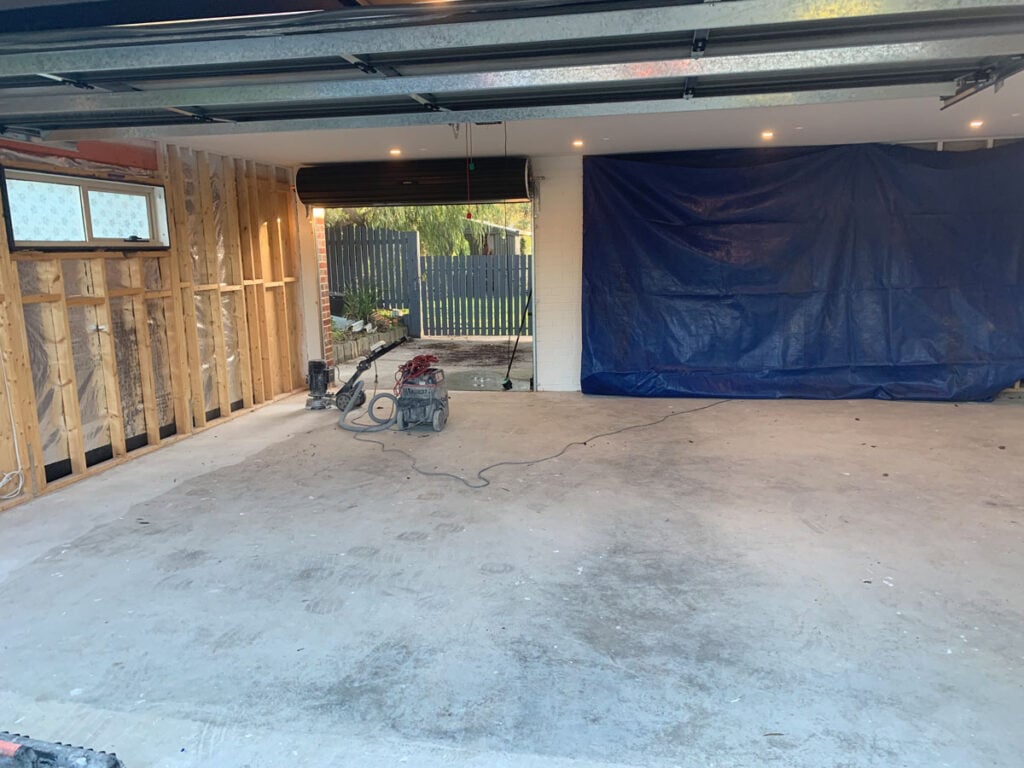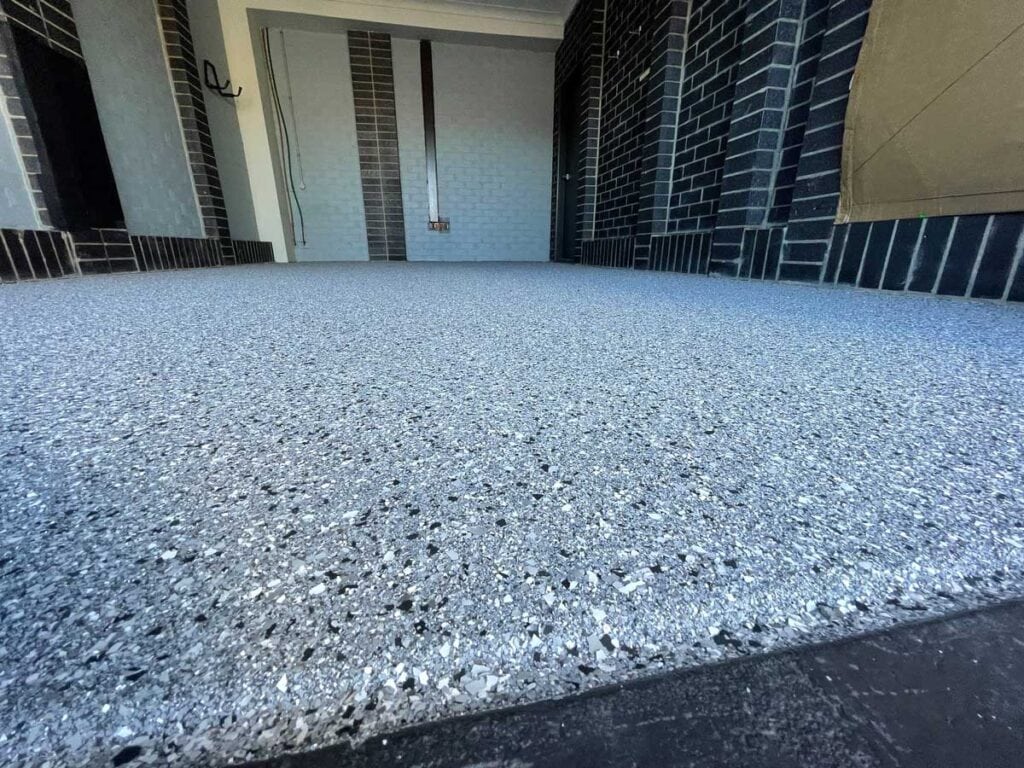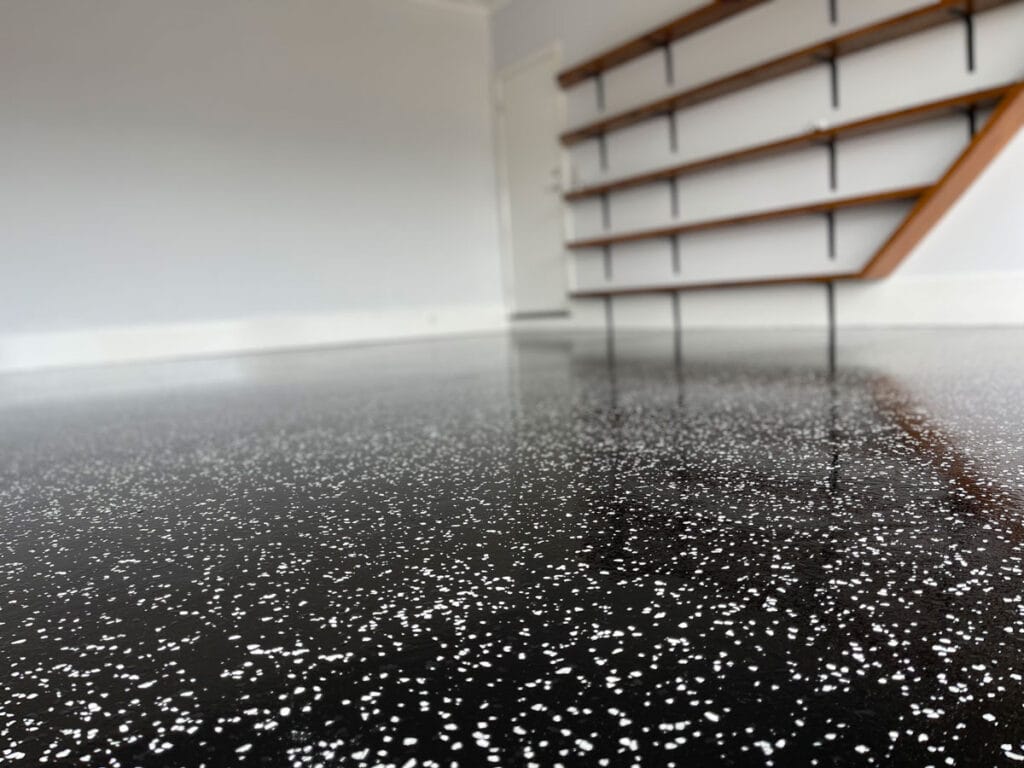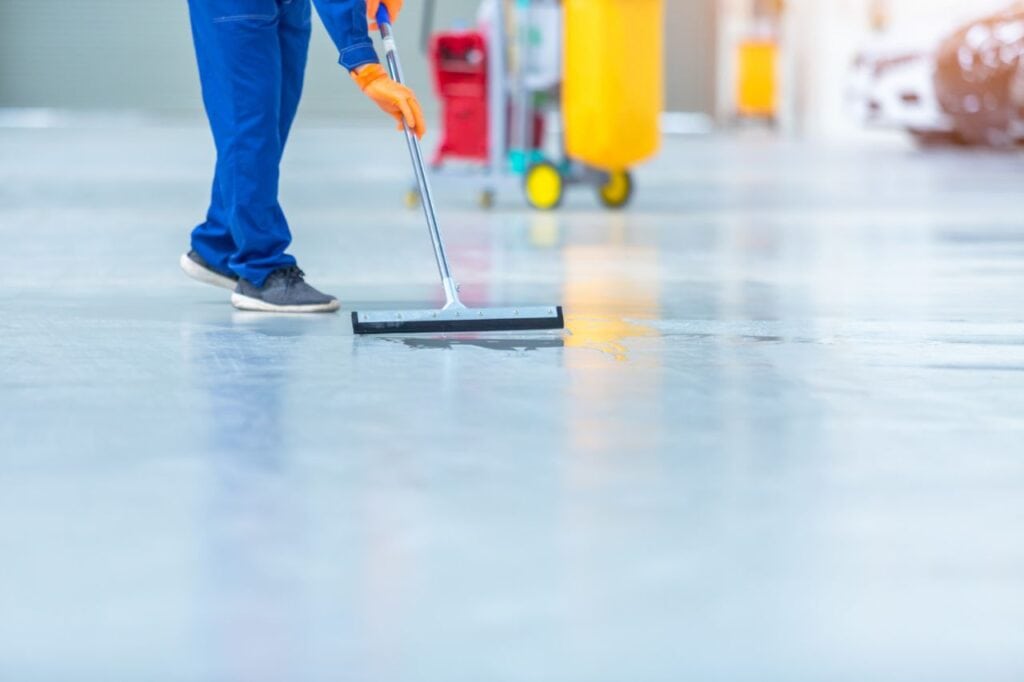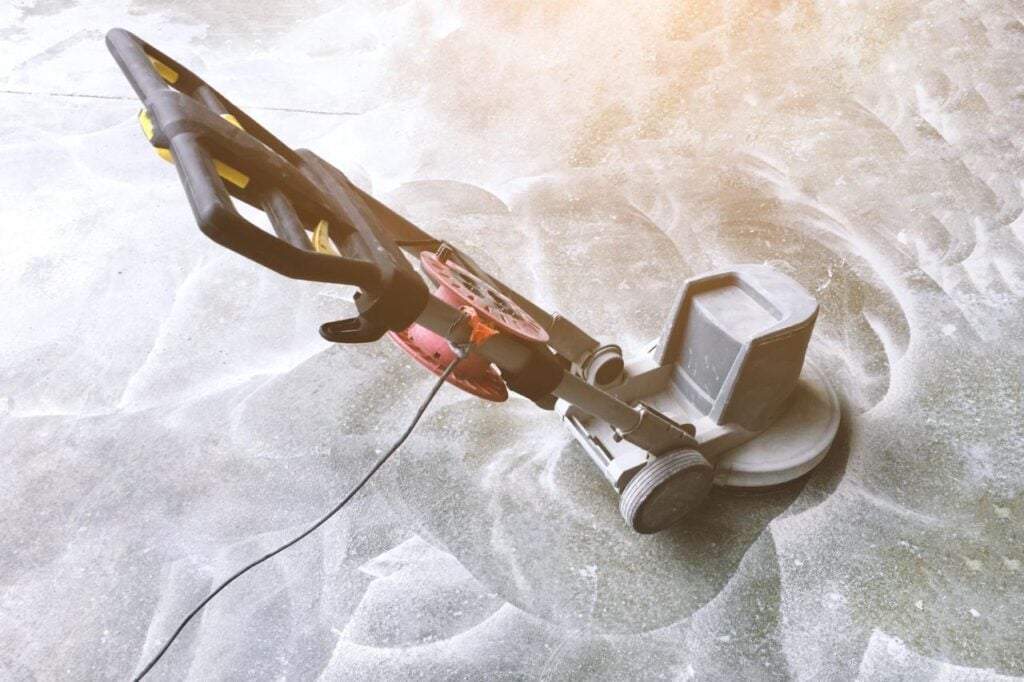If you're considering upgrading your garage flooring, we can provide some guidance to help you get started. Chances are, your garage floor is made of cement and has accumulated years of dirt, grime, oil stains, and cracks. The constant use of cars, dropping tools, and general wear and tear can gradually deteriorate the surface. When it comes to replacing or improving your garage floor, several options are available, whether you aim to enhance its appearance and performance, increase your home's value, or achieve all these goals. These options include concrete repair, cement paint, installation of garage floor tiles or mats, or applying polymer coatings.
While using tiles or painting the cement can instantly enhance the look and protection of your floor, none of these options can match the long-term durability and impressive transformation a polymer coating provides, creating a versatile space. The three main types of polymers used for garage floors are epoxy flooring, polyurethanes, and polyaspartics.
All three coatings can turn your worn-out, cracked concrete floor into a visually appealing masterpiece. However, choosing the suitable coating for your specific situation can be overwhelming. To assist you in making an informed decision, we have focused on comprehensively comparing polyaspartic and epoxy floor coatings.
Which is Better for You: Polyaspartic Coating or Epoxy?
When considering floor coatings for your home garage or workspace, you may have encountered epoxy floor coatings known for their durability, improved traction, and aesthetic appeal. However, you may also have heard about polyaspartic floor coatings, and you might have assumed that they are just a variation of epoxy.
In this post, we will focus on polyaspartic coatings, which are a relatively new addition to the industrial coating market. We will overview these coatings, discuss their ideal applications, and compare them to the more commonly known epoxy coatings. By the end, you will better understand polyaspartic coatings and how they differ from epoxy coatings.
What Is Polyaspartic?
Polyaspartic coating emerged in the late 1990s and was initially developed to combat rust and corrosion on steel structures such as bridges. Its primary purpose was to provide exceptional heat resistance, allowing it to withstand temperatures exceeding 300 degrees Fahrenheit. This characteristic makes polyaspartic an excellent choice for surfaces that experience high levels of traffic and heat, including garage floors.
In addition to its heat resistance, polyaspartic coatings exhibit impressive resistance to UV rays and corrosive chemicals. While highly acidic substances can affect its durability, polyaspartic is a viable alternative to many applications of concrete flooring and epoxy coatings.
As polyaspartic coatings entered residential garage flooring, formulations were optimized for fast drying times and low VOC emissions. This enables convenient one-day installations with minimal offensive odours compared to alternatives like epoxy coatings.
Is It Possible to Make Your Own Polyaspartic Coating?
Epoxy, being more user-friendly than polyaspartic, is a popular choice for do-it-yourself flooring kits. With polyaspartic coatings, you only have around 30 minutes to work with the combined components before they solidify due to the shorter pot life. Epoxy coatings, in comparison, dry in about 60 minutes. Both coatings' pot lives are susceptible to environmental and methodological variables.
To achieve a proper application of polyaspartic coatings, at least two persons are required. The higher upfront cost of polyaspartic coatings compared to epoxy coatings also raises the financial risk associated with unanticipated outcomes.
Polyaspartic Flooring Pros
What are the advantages of choosing a polyaspartic coating for your garage installation?
UV-resistant
Polyaspartic coatings offer long-lasting UV stability, maintaining their original appearance and preventing issues such as yellowing, fading, and loss of shine that can occur with prolonged sunlight and UV exposure in epoxy finishes.
Durability
Polyaspartic coatings have exceptional corrosion resistance, allowing them to be applied indoors and outdoors. This versatility makes them suitable for various environments. When applied correctly, a polyaspartic coating can provide long-lasting durability, ensuring its performance and appearance for many years.
Ease of cleaning
Polyaspartic floors offer excellent resistance to chemicals and moisture, making them highly durable and easy to maintain. Their versatility extends to cleaning as well, as regular dust mopping and spot-treating spills are usually sufficient to keep the floors as good as they did on the installation day. Additionally, the decorative flaking in the flooring helps conceal everyday spills and dirt, minimizing the visibility of stains and colour imperfections common with old cement floors. With polyaspartic floors, you can bid farewell to unsightly stains and colour blemishes, enjoying a cleaner and more aesthetically pleasing garage floor.
Stunning Work of Art
Polyaspartic coatings offer the advantage of complete customization for your floor without any additional costs or complications. While the range of colour choices may be more limited than epoxy due to the rapid drying time of polyaspartic, you can be confident that your polyaspartic floor will be a standout feature that will spark conversation for many years. The ability to personalize and create a unique floor with polyaspartic is a significant benefit that ensures your floor will be a memorable and eye-catching element in your space.
Quality
Initially, polyaspartics found extensive use in commercial settings like aeroplane hangars and hospitals, where their durability and longevity were highly valued. As the technology behind polyaspartics has advanced and become more accessible, they have emerged as the superior option for flooring due to their exceptional durability and the enduring quality they bring. Unlike epoxy floors, which can be prone to imperfections, polyaspartic floors offer a smooth and level finish, especially when professionally installed, following thorough surface preparation and repairs. This results in an outcome that resembles the polished appearance of granite, further enhancing the overall appeal and value of polyaspartic coatings.
Epoxy Flooring Pros
What are some good reasons to put an epoxy covering on the floor of your garage?
- Excellent bonding, which helps it last a long time.
- Bright, professional look – draws attention
- It resists heat and poisons and can be used in many places.
- Compared to polyaspartic sealers, they cost less. If you want to save money and get the most out of your floor finish, epoxy is a great choice. Epoxy is a great way to save money compared to polyaspartic.
- There are a lot of colours to choose from, which makes it easier to colour-code tools. Epoxy floors can be changed to fit the style of their owners. Most people who want to liven up a bland concrete floor choose our vinyl flake treatments.
Which Is Better: Epoxy or Polyaspartic ?
There is a significant cost difference between the two flooring finishing choices. When compared to polyaspartic, epoxy floor coating is noticeably less expensive. Although polyaspartic is more expensive, there are good reasons to pay for it.
Epoxy might be more difficult to work with because of its lengthy curing time, substantial preparation, and residual scent. These disadvantages distinguish it from polyaspartic, which has an odourless curing process and a shorter curing time (usually 24 hours). Homeowners like these benefits because they facilitate a swift installation process that leaves a polished final product.
Polyaspartic stands out due to its remarkable longevity. It is more flexible than epoxy, resistant to stains and scratches, and doesn't fade in the sun. It doesn't require much in the way of upkeep or replacement to keep looking great for a long time. Epoxy, on the other hand, needs to be replaced every few years because it deteriorates from the sun's UV rays and becomes stained and scratched easily.
A polyaspartic floor coating is an affordable and long-lasting option for homeowners. It gives them the best return on their money and lasts a long time. Although epoxy can improve the look of a garage floor in the near term, it still has some work to do before it can compete with other materials in terms of durability and value.
How Different Are Application Processes?
Any floor coating will fail if the surface isn't properly prepared, so take your time. The whole floor needs to be disinfected and free of debris, and any damage should be patched up.
There are a number of things to think about before covering a floor with epoxy or polyaspartic. The garage's air temperature and humidity, as well as the concrete's moisture level and surface temperature, must be just right. These aspects regulate the coating components' blending and curing, which in turn affects the dried floor's visual look.
Coatings made from epoxy or polyaspartic resins also require a hardener or curing agent. The application step involves mixing these components together.
The mix must be just right. It is crucial to use precise measures and thoroughly combine the ingredients.
Which One Should You Buy, Polyaspartic or Epoxy?
We have provided a list of advantages to help you decide between a polyaspartic floor coating and an epoxy floor coating.
A polyaspartic coating is an excellent choice if you're short on time and need a quick drying process, if the environment presents issues with considerable temperature changes, and if the surface will be exposed to direct UV or sunlight radiation.
Epoxy floor coatings, without anti-slip additives, can be dangerously slippery when wet. Slipping in the workplace raises safety and liability concerns, therefore this is not a good solution. Although non-slip epoxies are available, their high price tags often make it less appealing than the newer polyaspartic formulations.
While polyaspartic coatings may be more expensive than epoxy coatings, we strongly suggest considering their overall benefits when making your decIt is important to mention that these coatings can be used together and are not limited to one or the other. It is possible to apply a polyaspartic finish coating over an epoxy primer, allowing for a combination of their individual benefits to be achieved.
Conclusion
The key information here is the comparison of polyaspartic and epoxy floor coatings. Originally created to protect steel from rust and corrosion, polyaspartic coatings have recently entered the industrial coating industry. They can tolerate temperatures in excess of 300 degrees Fahrenheit, making them a great option for high-traffic areas that tend to get hot and humid, including garage floors. They also show remarkable durability against both chemical corrosion and ultraviolet light. Due to its quick drying times and minimal VOC emissions, polyaspartic is a potential option to concrete flooring and epoxy coatings.
It has a higher entry price than epoxy coatings but is more user-friendly overall. Polyaspartic coatings are a piece of art that is also UV-stable, corrosion-resistant, easy to clean, and durable. They can withstand the effects of UV rays, they are long lasting, and they require little upkeep. They are not only long-lasting, but also low-maintenance because they are chemical- and water-resistant. The outstanding resilience and lasting quality of polyaspartic flooring make it a prefered alternative for flooring.
Because of its odourless drying method and faster curing time (typically 24 hours), epoxy flooring is a terrific way to save money and get the most out of your floor finish. Polyaspartic is noteworthy in its durability because it is more adaptable, resists stains and scratches, and doesn't degrade when exposed to sunlight. It's more expensive, but it will last a lot longer and look great for a long time. Epoxy floor coatings wear down from the sun's UV rays and become damaged and scratched quickly, therefore they need to be renewed every few years. Polyaspartic floor coatings provide the best value for the money and endure a long time, making them a great investment for homeowners.
Polyaspartic coatings benefit from exposure to direct UV or solar radiation, temperature variations, and drying times. Without anti-slip additives, wet epoxy floor coverings provide a serious hazard. You can acquire the benefits of both polyaspartic coatings by using them simultaneously; you're not stuck with just one or the other.
Content Summary
- Upgrading your garage flooring can enhance its appearance and performance.
- Options for garage flooring include concrete repair, cement paint, tiles, mats, and polymer coatings.
- Polymer coatings offer long-term durability and impressive transformations.
- The three main types of polymers used for garage floors are epoxy, polyurethanes, and polyaspartics.
- Polyaspartic coatings are a relatively new addition to the industrial coating market.
- Polyaspartic coatings were initially developed to combat rust and corrosion on steel structures.
- Polyaspartic coatings provide exceptional heat resistance and are suitable for high-traffic and high-temperature surfaces.
- They exhibit impressive resistance to UV rays and corrosive chemicals.
- Polyaspartic coatings have fast drying times and low VOC emissions, enabling convenient one-day installations.
- Making your own polyaspartic coating can be challenging due to the short pot life.
- Polyaspartic coatings require at least two people for proper application.
- Polyaspartic coatings offer UV resistance, maintaining their appearance over time.
- They provide exceptional durability and corrosion resistance.
- Polyaspartic floors are easy to clean and maintain, with excellent resistance to chemicals and moisture.
- Polyaspartic coatings offer customization options without additional costs.
- They provide a smooth and level finish, resembling the appearance of polished granite.
- Epoxy floor coatings offer excellent bonding and a bright, professional look.
- Epoxy floors resist heat, poisons, and are cost-effective compared to polyaspartic sealers.
- They provide a wide range of color options and can be customized to fit personal styles.
- There is a significant cost difference between epoxy and polyaspartic coatings.
- Epoxy coatings have a longer curing time and require substantial preparation.
- Polyaspartic coatings have a shorter curing time and an odourless process.
- Polyaspartic coatings are more flexible, resistant to stains and scratches, and don't fade in the sun.
- Polyaspartic coatings offer affordability and long-lasting durability.
- Proper surface preparation is crucial for the success of any floor coating.
- Factors such as air temperature, humidity, and concrete moisture affect the application process.
- Precise measurement and thorough mixing of epoxy or polyaspartic components are essential.
- Polyaspartic coatings are recommended for quick drying, temperature changes, and UV exposure.
- Epoxy coatings without anti-slip additives can be slippery when wet.
- Polyaspartic coatings can be used in combination with epoxy, offering a blend of benefits.
Frequently Asked Questions
Although a polyaspartic floor coating may cost more than DIY options, it's worth the price range because of its quality and ability to outshine other floor options. Not needing to be replaced often and having minimal maintenance requirements make it the ideal option for long-term use instead of a quick fix.
Polyurea and polyaspartic coatings are highly durable and long-lasting. If you are looking for a concrete coating that you won't have to worry about maintaining and that will last as long as you live in your home, then this type of coating may be what you're looking for.
If you're looking for the prime picking of heavy-duty floors, you've found it; mortar epoxy floors are the best and strongest epoxy coatings for any area damaged by pressure or impact. These floors are the strongest and most durable of all epoxy floors.
Epoxy floors are durable, easy to clean and maintain. Moreover, it looks great with its seamless appearance and ability to customize in various colours. However, issues such as chipping or cracking may occur. The extent of repair will depend on the type of cracks.
Even though epoxy floors are highly durable, they can get damaged by grease, oil or water. The damage won't happen immediately, but you should still clean the mess before you forget. If left for too long, even water can degrade your epoxy floor.
